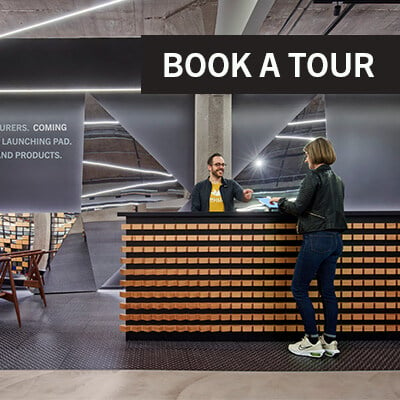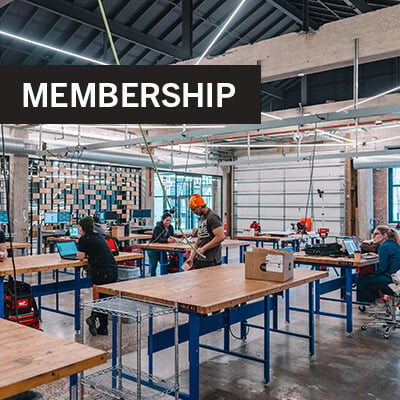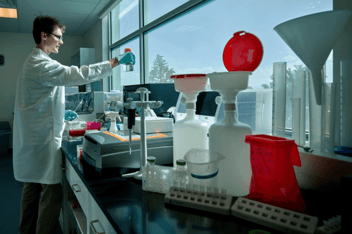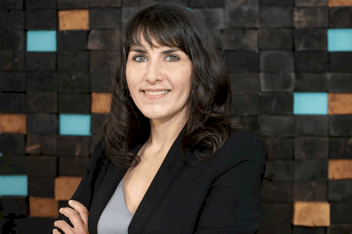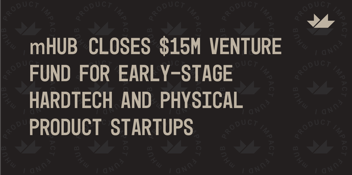How to Accurately Align Product Features to Patient and Physician Needs
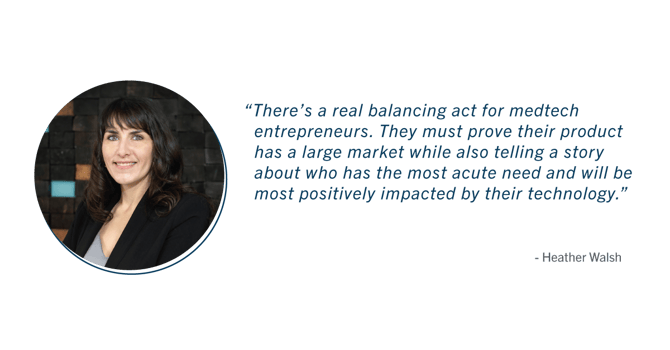
Matching medtech solutions to patient needs is critical. While all new innovations require an understanding of the market need, healthcare technologies exist in a complex space where multiple stakeholders have their own perspectives and experiences. The most successful medtech startups observe, in detail, the nuances of an unmet need and then develop product solutions around the very specific pain points that have been uncovered - whether they lie with the surgeon, nurse, patient, or entire hospital system. Without a thorough study, innovators may jump to conclusions about gaps in the market and how their solution fills the perceived voids.
Talking to multiple stakeholders in the medical system and observing people and process at each stage can help medtech entrepreneurs more fully understand the problem they are trying to solve. There are several programs that provide support in this area, including The National Science Foundation I-Corps program and the Stanford Biodesign program.
When I was at University of Chicago, I was actively involved in guiding I-Corps teams through the process of conducting interviews, helping them get comfortable with calling people and framing their questions in a way that would not be ‘leading’ to the person answering. We designed inquiries that got to the heart of the issues the program participants were trying to understand, and I helped them through the process of collecting and synthesizing data so they could draw meaningful conclusions.
The Stanford Biodesign program places students in healthcare settings where they can observe and catalog thousands of needs. Through that observation and research, the students validate and scope the needs, then categorize and prioritize them until they identify a very specific need that they would like to address. At that point, work can begin to explore solutions.
Some entrepreneurs experience the uncomfortable realization that their hardtech cannot compete with current solutions already available in the marketplace, or that the problem they’re solving may not substantiate a viable business. In these cases, entrepreneurs usually have to course-correct, either by looking into adjacent spaces or ‘backing up’ to do the necessary research – which can be challenging if you’re an early-stage startup not involved in a well-connected accelerator program.
As the Executive Director of the MedTech Accelerator at mHUB, I am very focused on designing an accelerator curriculum that empowers entrepreneurs to develop cutting-edge, demand-driven hardtech that truly meets real needs.
Demand-driven Hardtech Requires an Iterative Process
Entrepreneurs who have gone through the exercise of needs assessment can fall into the trap of checking it off their list, but needs finding and validation must be done iteratively during the physical product development process. The more medtech startups know about their technology, the more they must go back and ensure they understand the problem, the population they are trying to address, and the outcomes they are looking to achieve.
The following questions could be asked:
- What are the criteria of a solution to that need? Does my technology actually fulfill those criteria?
- What measurable outcomes would demonstrate that my technology meets the need? How do I collect that data?
- Who is the population I am addressing with my solution? Does it fit into their workflow easily? At the right time?
- What are the current solutions available? How does mine compare? Do I need to find out more information about different stakeholders that I hadn’t been aware of when I did my initial study?
The deeper product developers dive, the more knowledgeable they become about the ecosystem they’re operating within and the more likely they’ll start to see stakeholders whose perspectives may not have been initially considered. It’s important for early-stage medtech startups to be aware that this is an ongoing process. It’s never too late for these teams to do more of that work, and a portion of the mHUB MedTech Accelerator will support startups through this iterative process.
The teams entering our current MedTech Cohort will be at different stages, and they will gain a personalized hardtech development experience working with the mHUB team. Some startups will have a forward-thinking rudimentary prototype and others may have a more developed prototype ready for testing, but they’re unsure of how to scale and manufacture – whatever stage these startups are in, the mHUB Accelerator provides a holistic approach that focuses quite literally on the ‘nuts and bolts’ of the product, the market fit, and the fundamentals of building a successful, sustainable business.
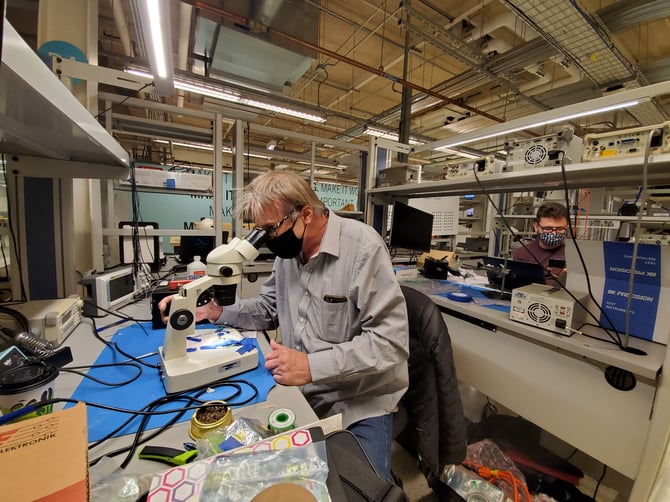
Needs Matching Efforts can support the path to FDA Approval
While not all medtech startups require regulatory approval to sell their hardtech, many will have to work through the process of obtaining FDA approval. Navigating regulatory paths can be long, expensive, and risky due to uncertainty in what the data will reveal. With risk being inherent in this medtech development process, ‘doing your homework’ and matching the need to the solution upfront often supports a smoother path through that regulatory process.
If the need is understood at a granular level, then medical product designers know which specific patients are really the ones that are going to benefit the most from the startup’s technology. When the perfect customer or patient is narrowed down, it’s easier to design a trial where the biggest benefit possible to patients or clients can be seen.
Medtech startups that more accurately identify the ideal patient or client for which their technology will have the most impact will almost always end up with better-designed trials and solid data. Then later, the business can expand out to patients or clients that were not necessarily the ‘perfect’ match initially, but who might still benefit from the new technology. That’s a real balancing act for medtech entrepreneurs who want to show a viable business model. They must prove their product has a large market while also telling a story about who has the most acute need and will be most positively impacted by their technology.
Stay Focused on a Feedback Loop
Medtech startups have to build in the time it takes to deeply understand their key customers, patients, and stakeholders. Product developers need to take a thoughtful approach when developing prototypes. Questions need to be asked around what each prototype is trying to demonstrate, what testing can be done to obtain proof of concept, and what can be gathered from that data.
It is essential to plan a feedback loop into your product development. Once medtech startups have a product concept and have accurately matched the need to the product, then they must apply what has been learned about the stakeholders to the prototype and vice versa. Prototyping resources, skills development, mentorship and funding call all be accessed through the nation’s largest hardtech innovation and product development center: mHUB.
If you have any questions about how to effectively conduct needs-matching research, contact us.
Learn more about the mHUB Accelerated Incubation program at mhubaccelerator.com.
